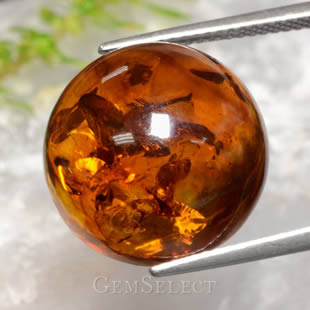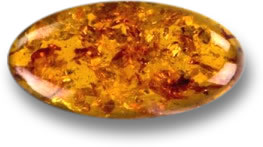|
|
Your Details
|
|
Your Details
|
Reviewed By Andreas Zabczyk
The Long and Winding Amber Road Round Amber Cabochon
The Amber Road served as a historical trade route facilitating the transportation of amber from coastal regions along the North Sea and the Baltic Sea to the Mediterranean Sea. The trade of amber played a significant role in defining prehistoric trade routes between Northern and Southern Europe. Considered a valuable commodity often referred to as "the gold of the north," amber was transported overland from the coasts of the North Sea and Baltic Sea, following the routes of the Vistula and Dnieper rivers, to reach destinations such as Italy, Greece, the Black Sea, Syria, and Egypt. This extensive trade network spanned thousands of years. The discovery of ancient artifacts has suggested that amber has been traded since approximately 3000 BCE. The route which the amber took began at the Baltic Sea and led to areas of Western Europe such as Italy - the center of the Roman Empire. The ancient Romans valued amber for both its appearance and metaphysical properties. They believed that amber helped to cure several health ailments, including toothache, stomachache, headache and stress. Amber is an organic gemstone that is composed of fossilized tree resin. Ancient forests are the source of amber gemstones. To understand the amber route, it is first necessary to know the main source of amber. Arguably the most important source of amber is under the Baltic Sea, where there was once a forest. The force of the sea drags the amber up from the seabed, and since amber has a very low specific gravity, it floats in saltwater. This means that it gets washed up onto the North Sea shores and the Baltic Coast after storms, particularly in the region known today as Kaliningrad in Russia. Amber deposits are also found in other parts of the world, but traditionally, the most highly-prized amber comes from the Baltic Coast.  Oval Baltic Amber Cabochon
The ancient Amber Trade Route began at the Baltic Coast where the amber was collected, and the amber would travel from this area toward Southern Europe. The earliest route went east and then along the Danube River to the Black Sea, where it would be shipped to the ancient Greeks. The ancient Romans then built an overland route that linked the Danube River to the Port of Aquileia in Italy. Other routes were also taken, such as a sea route along the Baltic and North Seas to Britain, and then the Mediterranean and beyond. Baltic amber is also thought to have traveled as far as Egypt, since amber was found in the breastplate of King Tutankhamun. Therefore, the Amber Road joined the Baltic Coast to the Mediterranean and beyond, to the Black Sea and Egypt. Amber reached Asia via the Silk Road. Nowadays, traces of the ancient Amber Road can still be seen in some of the countries which have a historical connection to the gemstone. For example, in Poland, one of the main highways is known as the "Amber Highway", and there are museums in Lithuania and Poland, which inform the public about amber. Tourists may now even travel along an "Amber Road" from Kaliningrad to Latvia, and learn about amber sources, processing and jewelry along the route. The lucky ones may talk a walk on the beach and find a piece of golden amber there. |
